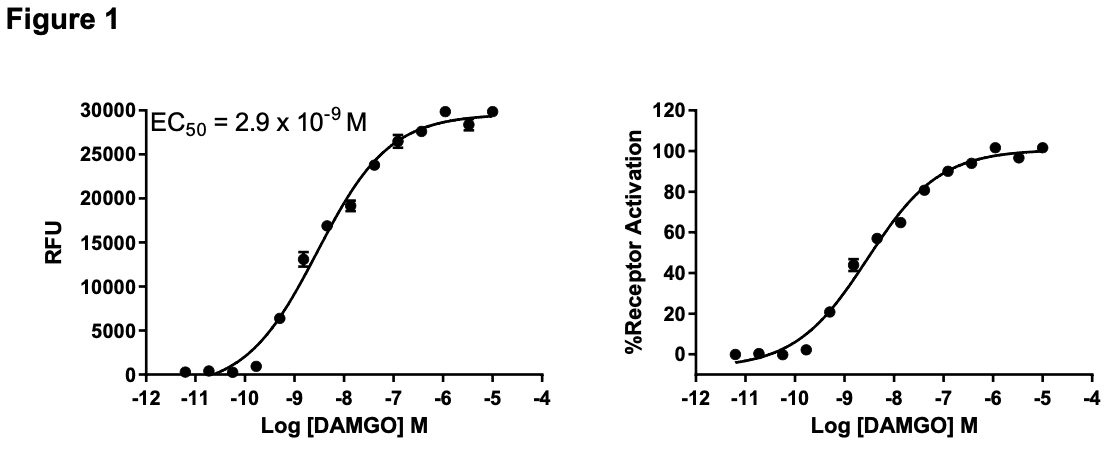Product Information
Catalog Number:
DCG1350-1a
Lot Number:
DCG1350-1a-100416
Quantity:
1 vial (4 x 106) frozen cells
Freeze Medium:
Cellbanker 2
Host cell:
CHO-K1 Gαqi5
Transfection:
Expression vector containing full-length human OPRM1 cDNA (GenBank accession number NM_000914.2) with FLAG tag sequence at N-terminus
Recommended Storage:
Liquid nitrogen upon receiving
Propagation Medium: DMEM/F12, 10% FBS,
Stability:
Stable for 1-2 days after thawing
Data Sheet
Background: μ opioid receptor (MOR) is a G protein-coupled receptor for β-endorphin. The receptor activation inhibits neurotransmitter release by reducing calcium currents and increasing potassium conductance. MOR mediates positive reinforcement following direct (morphine) or indirect (alcohol, cannabinoids, nicotine) activation. MOR plays a genetic role in the control of gut inflammation. MOR-deficient mice are highly susceptible to colon inflammation, with a 50% mortality rate occurring 3 days after administration of TNBS that induces inflammation. MOR agonists regulate cytokine production and T cell proliferation and might be new therapeutic molecules in inflammatory bowel disease.
Application: Functional assays

Figure 1. Dose-dependent stimulation of calcium flux upon treatment with ligand, monitored with FLIPR.
References:
Chen et al. (1993) Molecular cloning and functional expression of a mu-opioid receptor from rat brain. Mol Pharmacol 44:8-12.
Contet et al. (2004) Mu opioid receptor: a gateway to drug addiction. Curr Opin Neurobiol 14:370-378.
Philippe et al. (2003) Anti-inflammatory properties of the mu opioid receptor support its use in the treatment of colon inflammation. J Clin Invest 111:1329-1338.
